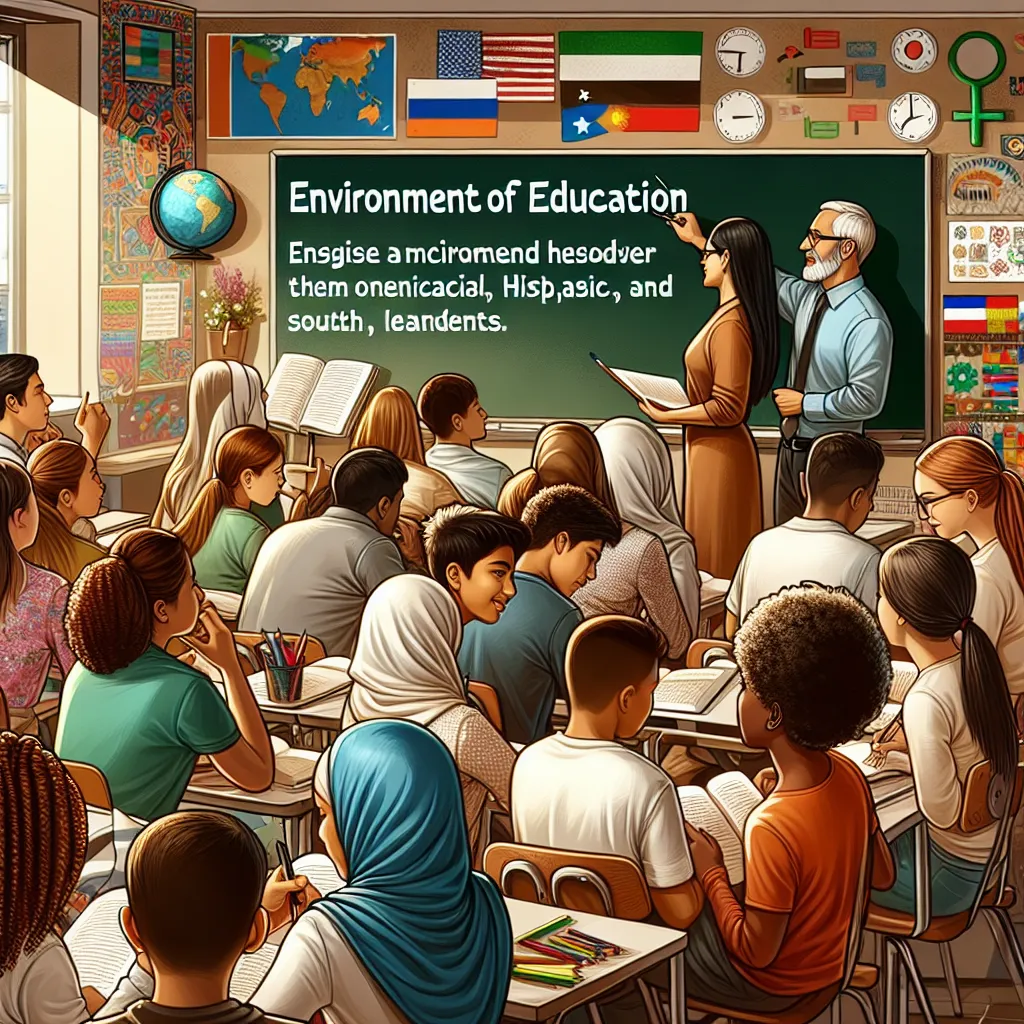Ask AI on The Internet
Question: THE REALITY OF LEARNER DIFFERENCE Bontle always has music on when she is studying. She often makes up rhymes or taps out a beat to remember her periodic table. Her brother Lesiba always invites two friends around and they sit and study together, explaining concepts to each other and talking things through. Her older sister, Thato, reads her textbook, highlights the relevant sections and paraphrases them in pages of notes. Who studies in the correct way? They all do! They simply have different preferred ways of making meaning from learning. Innate learner differences, such as temperament or personality, inherited characteristics, and other attributes, interact with the environment in a reciprocal way, in other words, each influences the other. It is therefore inevitable that the ways in which learners make meaning from their learning and their support needs, will be different. Therefore, we think of an everyday classroom as one in which the “classroom community is inevitably diverse, consisting of individuals who differ in many ways and who may require different forms of support at different times in their school careers” (Green & Moodley, 2018). The factors above combine to deliver a powerful message that education based on the bell-curve concept of “normal” is no longer fit for purpose for our learners—it will not help us plan effectively for what and how of teaching and learning in diverse classrooms. Davis asks whether this concept of “normal” is “playing itself out and losing its utility as a driving force”, proposing that “diversity is the new normality” (Davis, 2013, cited in Slee, 2018: 52). This is a significant shift in thinking that is starting to happen in educational systems across the world. As part of this shift, we are developing a growing understanding of the need to move away from the belief that one model of learning informs and justifies one model of teaching. Hart (2004: 3), for example, argues that real equity in learning “becomes possible when young people’s school experiences are not organised and structured on the basis of judgements of ability”. 3.1 How do Bontle, Lesiba and Thato demonstrate that there is no single "correct" way to study? [5] 3.2 Explain the reciprocal interaction between innate learner differences and the learning environment, as mentioned in the passage. How does this interaction influence the ways in which learners make meaning from their learning? [5] 3.3 In what ways does the concept of "normal" in education, particularly the bell-curve model, fail to address the diverse needs of learners according to the passage? Provide examples to support your answer. [5] 3.4 Discuss the significance of the shift in thinking mentioned in the passage, where "diversity is the new normality." How is this shift challenging traditional educational concepts and what implications does it have for teaching and learning in diverse classrooms? [5] 3.5 According to Hart (2004), why does real equity in learning become possible when young people's school experiences are not organised based on judgments of ability? Elaborate on the implications of this perspective for achieving equity for diverse learners. [5] Sub-Total= [25] Question 4 It's important for teachers to understand and respect the diversity within the LGBTQ community, to create an inclusive and supportive learning environment for all learners. 4.1 Arrange the terms in the acronym LGBTIQ to explain each one and assist novice teachers in understanding learners' sexual orientation and gender identity. [2x6=12] 4.2 Ubuntu philosophy fosters a supportive and inclusive environment for gender and sexual diverse (LGBTIQ) learners in a school environment. Outline specific strategies that a school’s management team can implement to incorporate Ubuntu principles in addressing and responding to incidents of bullying. [8]
### Question 3 #### 3.1 How do Bontle, Lesiba, and Thato demonstrate that there is no single "correct" way to study? [5] Bontle, Lesiba, and Thato each employ different study methods that suit their individual preferences and needs: 1. **Bontle** listens to music and uses rhymes and beats to aid in her memory, reflecting an auditory and musical learning style. 2. **Lesiba** values social interaction, as he invites friends to study together, emphasizing collaborative learning and verbal discussion. 3. **Thato** utilizes a methodical approach by reading, highlighting, and paraphrasing, which underscores a preference for solitary and structured study. These variations show that each learner's method is effective for their unique way of processing information, illustrating that there is no single "correct" way to study. #### 3.2 Explain the reciprocal interaction between innate learner differences and the learning environment, as mentioned in the passage. How does this interaction influence the ways in which learners make meaning from their learning? [5] Innate learner differences such as temperament, personality, and inherited characteristics interact with the learning environment in a mutually influential manner: 1. **Innate Characteristics**: A student's individual traits, such as being introverted or extroverted, can influence their preference for solitary or social learning. 2. **Environmental Influence**: The environment, including teaching methods and peer interactions, can impact how these traits are expressed and developed. For example, a naturally social student like Lesiba thrives in collaborative settings, which further encourages his learning style. On the other hand, Bontle, who is perhaps more attuned to auditory stimuli, benefits from integrating music into her studies. This dynamic interplay allows learners to derive meaning from learning in ways that resonate with their individual strengths and needs. #### 3.3 In what ways does the concept of "normal" in education, particularly the bell-curve model, fail to address the diverse needs of learners according to the passage? Provide examples to support your answer. [5] The concept of "normal," particularly the bell-curve model, assumes a standard or average method of learning that fits most students, leaving those who fall outside this norm struggling: 1. **Lack of Customization**: The bell-curve model does not account for the wide range of learning styles and needs, treating any deviation from the "norm" as less acceptable or effective. 2. **Example**: If the classroom only supports traditional textbook reading and note-taking (as Thato prefers), students like Bontle and Lesiba, who learn better through musical and verbal/social methods, might find it challenging to engage and succeed. This failure to recognize diverse learning needs can hinder students’ abilities to learn effectively and diminish their potential. #### 3.4 Discuss the significance of the shift in thinking mentioned in the passage, where "diversity is the new normality." How is this shift challenging traditional educational concepts and what implications does it have for teaching and learning in diverse classrooms? [5] The shift to recognizing diversity as the new normality signifies a major change in educational paradigms: 1. **Challenging Uniformity**: Traditional concepts that push for a uniform method of teaching and learning are being questioned, and there is a greater emphasis on adapting to the diverse needs of students. 2. **Implications**: - **Teaching Methods**: Educators are encouraged to employ varied teaching strategies to cater to different learning styles. - **Inclusive Education**: The focus shifts from a one-size-fits-all approach to creating inclusive environments where all learners, regardless of their differences, can thrive. This shift promotes equity in education, ensuring that all students have the opportunity to succeed in a way that aligns with their individual strengths and needs. #### 3.5 According to Hart (2004), why does real equity in learning become possible when young people's school experiences are not organised based on judgments of ability? Elaborate on the implications of this perspective for achieving equity for diverse learners. [5] Hart (2004) argues that organizing school experiences based on judgments of ability perpetuates inequality: 1. **Judgments of Ability**: When schools categorize students based on perceived abilities, it can limit opportunities for those deemed less capable and reinforce achievement gaps. 2. **Implications for Equity**: - **Equal Opportunities**: Removing ability-based judgments encourages creating learning opportunities accessible to all students, promoting an inclusive learning environment. - **Focus on Potential**: Recognizing that every student has unique strengths allows for personalized learning paths, fostering an environment where diverse learners can flourish. By eliminating ability-based judgments, schools can focus on meeting each student's needs, fostering a more equitable and supportive educational experience for all. ### Question 4 #### 4.1 Arrange the terms in the acronym LGBTIQ to explain each one and assist novice teachers in understanding learners' sexual orientation and gender identity. [2x6=12] 1. **L** - Lesbian: Refers to a woman who is emotionally, romantically, or sexually attracted to other women. 2. **G** - Gay: Refers to a person who is emotionally, romantically, or sexually attracted to people of the same gender, though it is often used to refer specifically to men who are attracted to men. 3. **B** - Bisexual: Refers to a person who is emotionally, romantically, or sexually attracted to more than one gender. 4. **T** - Transgender: Refers to a person whose gender identity is different from the sex assigned to them at birth. 5. **I** - Intersex: Refers to a person who is born with physical sex characteristics that do not fit typical binary notions of male or female bodies. 6. **Q** - Queer/Questioning: "Queer" is an umbrella term for sexual and gender minorities who are not heterosexual or cisgender. "Questioning" refers to someone who is exploring their sexual orientation or gender identity. #### 4.2 Ubuntu philosophy fosters a supportive and inclusive environment for gender and sexually diverse (LGBTIQ) learners in a school environment. Outline specific strategies that a school’s management team can implement to incorporate Ubuntu principles in addressing and responding to incidents of bullying. [8] Ubuntu, an African philosophy emphasizing community, mutual care, and interconnectedness, can be incorporated to create a nurturing environment for LGBTIQ learners through the following strategies: 1. **Promote Empathy and Understanding**: Facilitate workshops and training sessions to educate staff and students on LGBTIQ issues, fostering a deeper understanding and empathy towards diverse identities. 2. **Restorative Justice Practices**: Implement restorative justice approaches to resolve conflicts, encouraging offenders to understand the impact of bullying and engage in meaningful dialogue to repair harm. 3. **Peer Support Systems**: Establish peer mentoring programs where students can support each other, fostering a sense of community and solidarity among students. 4. **Inclusive Policies and Practices**: Develop and enforce anti-bullying policies that specifically protect LGBTIQ students and ensure that all school practices reflect inclusivity and respect for diversity. 5. **Celebrate Diversity**: Organize events and activities that celebrate diversity, such as Pride Month or diversity weeks, to create an environment that values and respects all students. 6. **Accessible Reporting Mechanisms**: Provide clear, confidential, and accessible ways for students to report bullying incidents, ensuring that they feel safe and supported in seeking help. 7. **Community Engagement**: Involve parents, guardians, and the wider community in understanding and supporting LGBTIQ students through information sessions and collaborative events. 8. **Support Services**: Provide access to counseling and support services for LGBTIQ students to ensure they have the resources they need for their well-being. By implementing these strategies, school management teams can create a safe, supportive, and inclusive environment that embodies the principles of Ubuntu and supports all learners.
Think your answer is better than the AI's? Post it below.
Other Most Relevant Posts:
 # Tutorial Letter: Assignment 05 - Incl. Education Approaches (IEA1501)
# Declaration of Honesty
# Assignment 05 Questions
# Inclusive Pedagogical Approaches
# Teaching Strategies for Incl. E
# Tutorial Letter: Assignment 05 - Incl. Education Approaches (IEA1501)
# Declaration of Honesty
# Assignment 05 Questions
# Inclusive Pedagogical Approaches
# Teaching Strategies for Incl. E
Question Tags
If you want your question answered by an AI, click here.






Post your own comment: